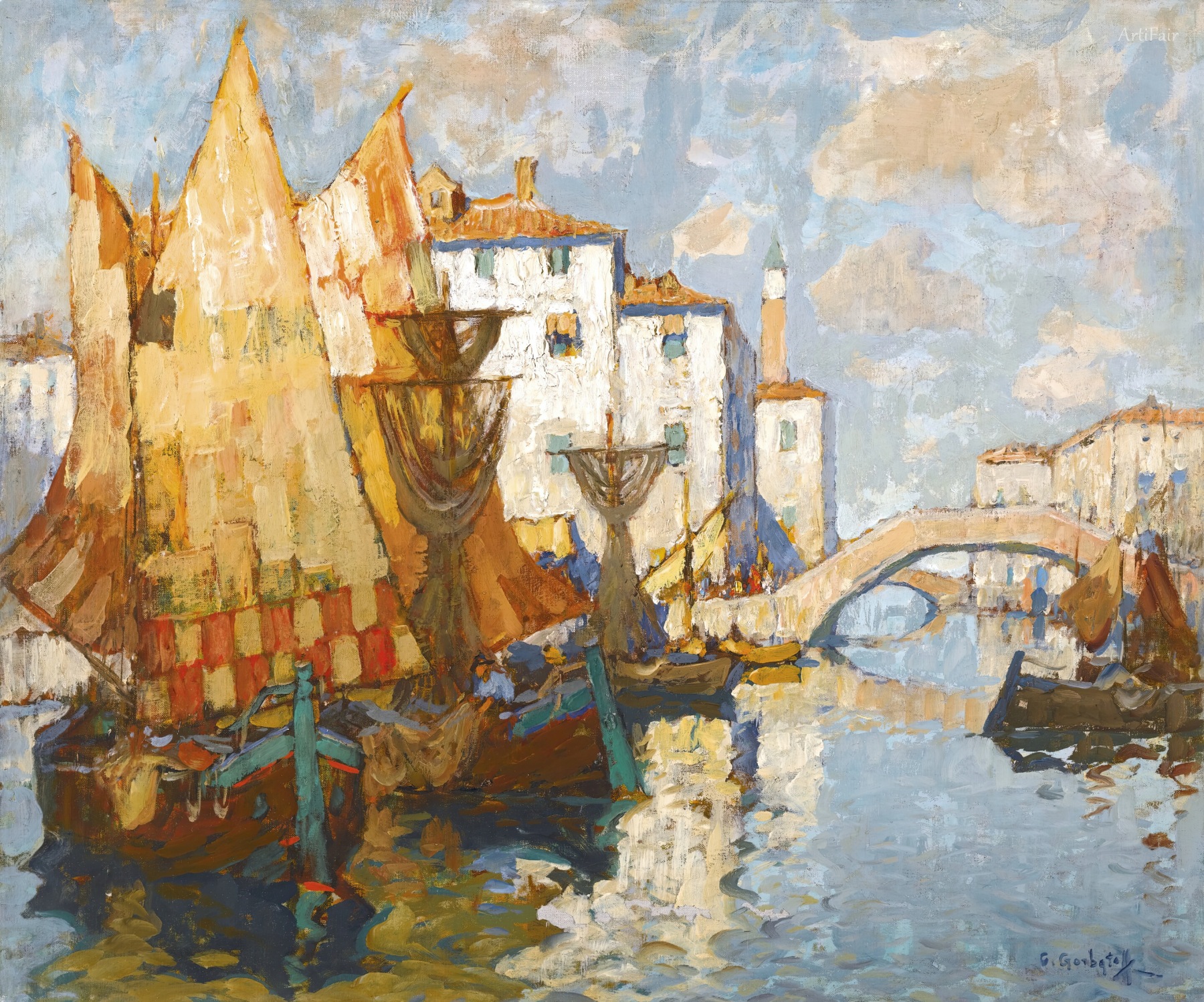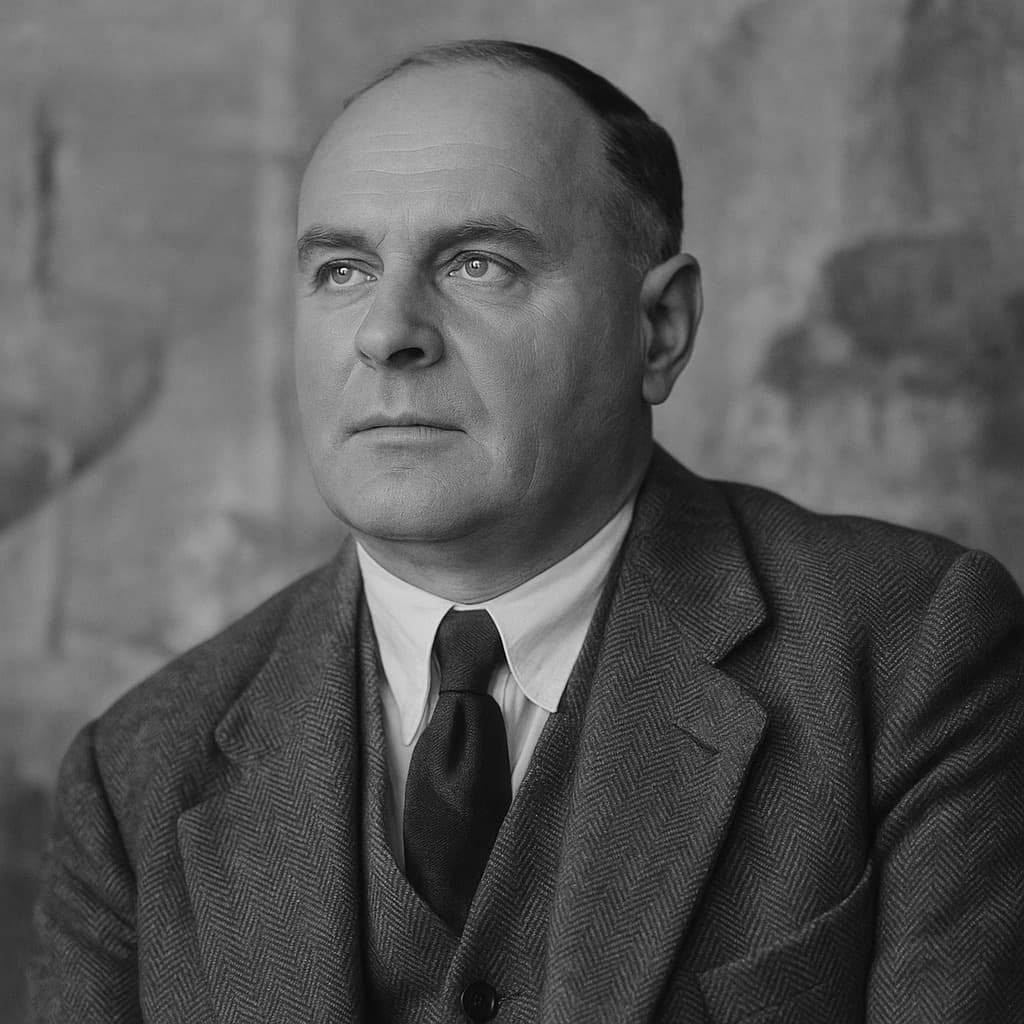

Konstantin Gorbatov
RU
61
Artworks
1876 - 1945
Lifespan
Artist Biography
Konstantin Ivanovich Gorbatov (1876-1945) was a distinguished Russian Post-Impressionist painter celebrated for his lyrical landscapes that captured both the nostalgic charm of old Russia and the sun-drenched beauty of Italy. Born in Stavropol, on the Volga River, Gorbatov's artistic journey began not with painting, but with architecture. After studying civil engineering in Riga, he moved to St. Petersburg in 1904, where he enrolled first in the Baron Stieglitz School for Technical Draftsmanship and then the architecture department of the Imperial Academy of Arts. A year later, he found his true calling, switching to the painting department to study under renowned landscape artists Nikolay Dubovskoy and Alexander Kiselev. This architectural background instilled in him a strong sense of composition, which would become a hallmark of his harmonious cityscapes.
Gorbatov's early career was marked by a unique fusion of the realist tradition of the Peredvizhniki (The Wanderers) with the burgeoning influence of Impressionism. He gained acclaim for his depictions of provincial Russian life, painting ancient towns like Pskov and Novgorod with a romantic, almost reverent atmosphere. His talent was quickly recognized; in 1910 he won an award for "Fishmarket on the Pskov River." A year later, he was awarded the title of "Artist" and received a gold medal at an international exhibition in Munich for his historical canvas "They’ve Reached the Shore." This success earned him a scholarship for a pivotal trip to Europe in 1912, which would profoundly alter the course of his artistic style.
Upon the invitation of writer Maxim Gorky, Gorbatov traveled to Italy, visiting Rome and the island of Capri. The brilliant Mediterranean light was a revelation, transforming his palette and technique. He embraced brighter, more vibrant colors and adopted the looser, broken brushwork characteristic of Post-Impressionism. His canvases became more decorative and optimistic, filled with the warmth and glow of the Italian coast. This new style was a perfect vehicle for what he called the purpose of art: a "celebration." The upheaval of the Russian Revolution of 1917, however, led him to leave his homeland permanently in 1922. He returned to his beloved Italy, settling first on Capri and later in Venice, where he produced some of his most joyful and commercially successful works.
In 1926, Gorbatov moved to Berlin, which was then a bustling hub for the Russian émigré community. He quickly became an established and respected figure within an artistic circle that included Leonid Pasternak and Ivan Myasoyedov. He exhibited his work widely across Europe and America, continuing to paint his sunlit Italian vistas while also recreating nostalgic scenes of Russia entirely from memory. These imagined Russian landscapes were often imbued with the same Mediterranean light, creating a unique synthesis of his past and present. His 1913 masterpiece, "The Invisible City of Kitezh," which drew on Russian folklore, is a prime example of his ability to blend myth, memory, and a modern, vibrant sensibility.
The final years of Gorbatov's life were fraught with hardship. The rise of the Nazi regime in Germany led to a hostile cultural environment, and demand for his lyrical style of painting dwindled. As a Soviet citizen in exile, he was forbidden from leaving the country during World War II. Isolated and impoverished, he and his wife endured the war years in Berlin. Gorbatov died on May 24, 1945, just weeks after the Allied victory. Tragically, his grieving wife, Elena, took her own life shortly thereafter. In a final act of devotion to his homeland, Gorbatov bequeathed his entire remaining collection of works to the Academy of Arts in Leningrad. After decades of obscurity in the Soviet Union due to his émigré status, his legacy has since been rightfully restored, and he is now celebrated as a key figure of Russian art abroad, remembered for his masterful ability to convey life not as it was, but as it could be—a world bathed in perpetual sunlight and harmony.